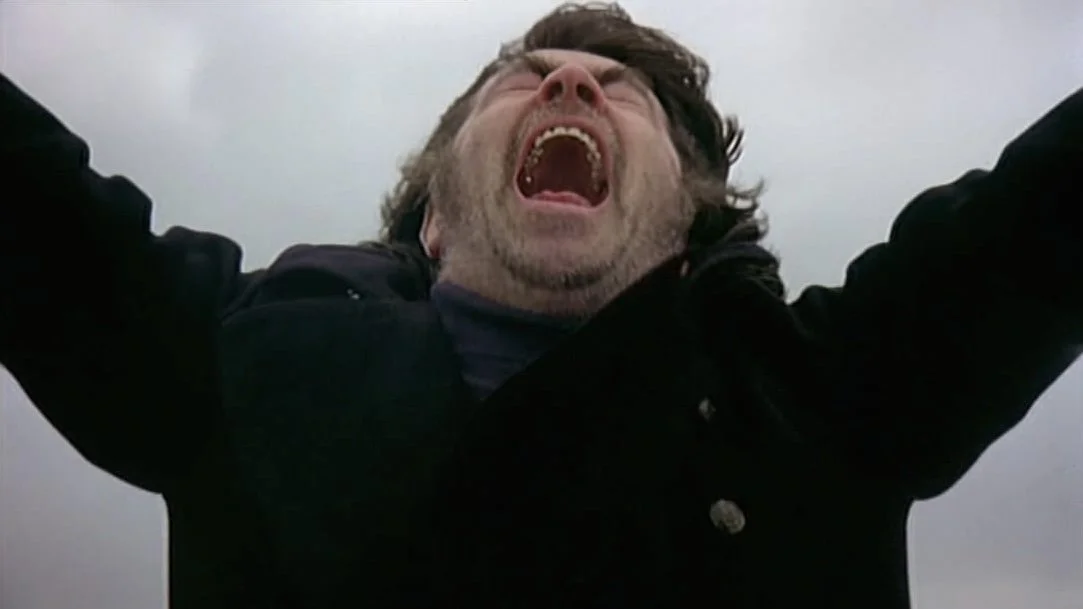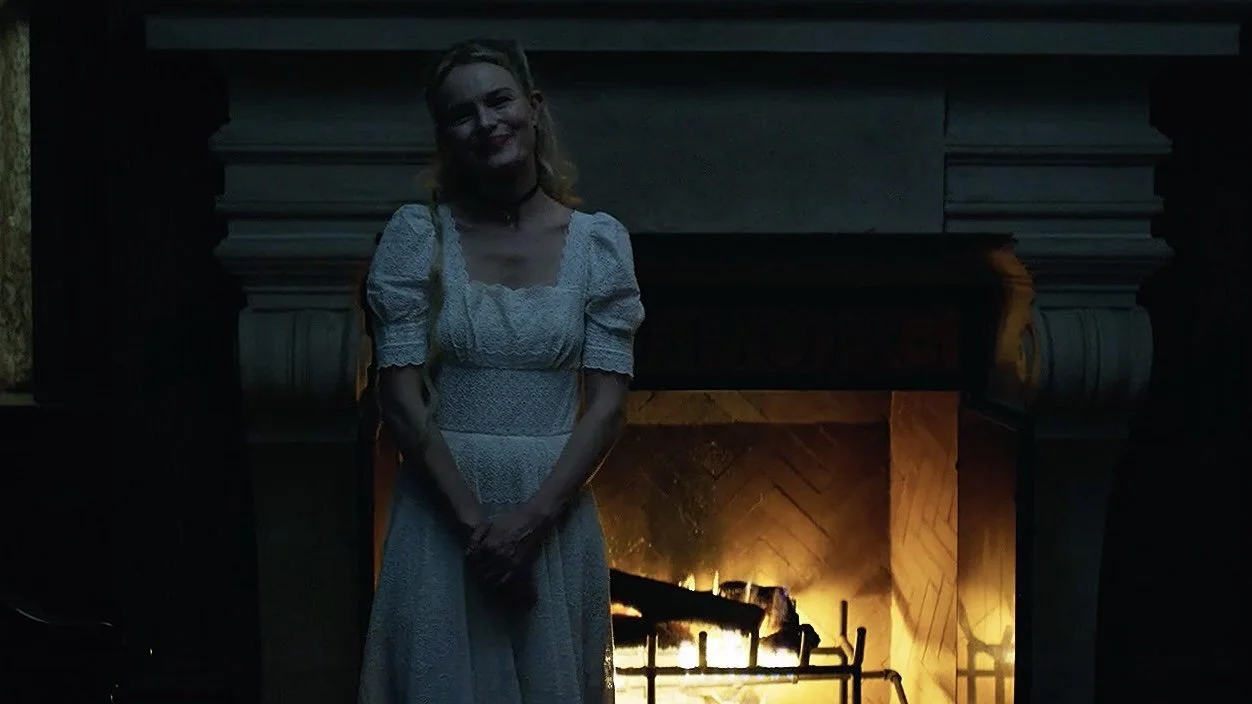Danse Macabre #10: Film Review — "The Shout" (1978)
In 1981, Stephen King published Danse Macabre, a work of non-fiction wherein the author acts as a tour guide through the history of horror. He addresses the social issues and political conflicts that have influenced creators over the years, and the ways creators have influenced each other.
King closes out the volume by recommending 96 films and 113 books released during the 1950-1980 period that he feels have significantly contributed to modern genre fiction. With this Fearsome Queer column, I’ll be making my way through those titles in no particular order.
If you visit this space frequently, you’ve likely noticed that I’m an acting nerd; I find the craft fascinating. All you need to say to me is: “Alan Bates, Susannah York, John Hurt, Tim Curry, and Jim Broadbent are in this,” and I’m interested. Tell me the film opens on the lawn of an insane asylum—where the patients and staff are playing cricket—and I’m committed, bitch! So, yeah, the cast of The Shout was the draw for me, but then I stayed for Jerzy Skolimowski’s idiosyncratic filmmaking.
The cricket game offers a fun scenario to bookend the main story, which is told in flashback and is itself pretty crazy. Tim Curry plays a visitor to the asylum who gets pulled into the score box, where a scorekeeper named Crossley (Alan Bates) begins recounting for him the tale of how he came to be at the asylum. I’m not always the biggest fan of framing devices, but I rather enjoyed this one. Cricket is already a wild game that doesn’t make much sense to me, so when a movie starts with mentally unbalanced people playing it, I just know I’m in for some strange shit…
The Shout was not my first Alan Bates rodeo. My intro to Alan Bates was watching him and Oliver Reed wrestle in the buff by the warm light of a fireplace in Women in Love. That ought to be how everyone meets Mr. Bates, actually! I mean, it’s the scene that gets brought up whenever Women in Love is discussed—which is, while understandable, a bit of a shame since Glenda Jackson is right there giving a commanding Oscar-winning performance. But alas, Ms. Jackson is (sadly) not in The Shout—however, Susannah York, her co-star from The Maids, is!
Although my first Susannah York rodeo was probably Richard Donner’s Superman pictures, I came to know her by name with They Shoot Horses, Don’t They? and Images. She totally blew me away with her raw, and frankly disturbing, work in the former. Then, her masterfully precise performance in the latter established her in my mind as one of the preeminent thespians of her era. I’m drawn to York not just because she’s a fantastic practitioner of her craft but also due to her willingness to do films that are weird as hell. That’s what The Shout is. Fuckin’ weird.
Bates has a lot do with that. In essence, the film’s ability to get under the skin of its audience hinges on his formidable talent. Every time I watch him in something, I’m reminded of how uninhibited he was. While his boisterousness is certainly on full display here and in the aforementioned Women in Love, I also recommend watching Bates flex in Georgy Girl, The Go-Between, and An Unmarried Woman; whatever unique energy he brings elevates any film he’s in. The Shout, in particular, benefits from the disturbingly forthright demeanor he imbues Crossley with.
Beyond being narratively odd, the film is also peculiar on a technical level. Skolimowski plays with the effectiveness of sound from the get-go. Once we flash back from the cricket match, we’re in the modest studio of Anthony Feilding (John Hurt), an experimental musician who composes music by recording everyday sounds—marbles rolling around, cigarettes burning, bees in a jar—then distorting them until they’re almost otherworldly. Right away, it summons an eerie mood. Sound editor Alan Bell deserves a special shout-out (ha!) for his audio acumen.
Anthony and his wife Rachel (Susannah York) live in a quaint, flavorless English village near the sea where exciting things seldom occur… Well, as misfortune would have it, their paths cross with Crossley, and it gets awkward pretty damn quick!
The Shout is bizarre, and the most upsetting part is probably Crossley’s describing the eighteen years he spent among the Aborigines of Australia, absorbing their culture—at which point my eyebrows shot up to an “oh dear” height. Truthfully, this is the scene that really hooked me, though. Crossley claims that a witch-doctor taught him how to murder with his voice, using a super-powered shout that kills anyone within earshot. How apropos of Crossley to hijack the life of a man obsessed with sound, right?
Sounds nuts, yet that’s not even the most fucked up part. Not only did Crossley obtain this “terror voice” technique from the shaman, but he also adopted (appropriated?) the supposed Aborigine custom of being allowed to slaughter one’s own kids—which Crossley claims is a totally cool thing to do so long as it’s done within a specific window of time, like a grace period for parenthood, apparently.
“Does that shock you, that I admit to the killing of my children?” Crossley asks Anthony and Rachel over lunch, as if they’re supposed to be anything other than completely disturbed. Bates’ frankness throughout his own narration is chilling. After that, it didn’t matter how baffling the film would become—I was on board!
The ease with which Crossley is able to seamlessly slip into the Fielding household is kinda frightening, to me—an introverted, socially awkward little homo who was brought up to be Midwest polite. Look, my boyfriend likes to host parties. Sometimes guests stay too long (anytime after 10:00pm is too long). And this is my fear: that one of our more eccentric (annoying) attendees will just stay forever. Similarly, this Crossley fellow just sort of invites himself over for lunch one afternoon and then manages to never really leave, essentially invading their home… Horrifying! With Crossley, though, there’s more going on than simply overstaying his welcome.
You see, the titular shout is not the only occult-like trick he learned from the Aborigine peoples over those eighteen years in Austraia. Crossley can also influence the minds (and desires) of others, particularly women. This is where Susannah York really gets to dig. My favorite Susannah York roles, it seems, are the ones where she’s combatting and/or capitulating to tremendous forces, either real or imagined, and The Shout is a great addition to that subsection of her résumé. Rachel’s slow psychological surrender isn’t as fascinating to watch as York’s grueling downward spiral in They Shoot Horses, Don’t They? or her hostile paranoia in Images, but Susannah York is always worth the price of admission nonetheless.
Both Fieldings, in one way or another, get wrapped up in Crossley’s reign of terror—but, after all, how could one not? With Crossley being the physical antithesis of Anthony (sorry, baby John Hurt), Rachel understandably succumbs to the mysterious stranger’s spell, meanwhile Anthony is transfixed by the guy’s sonic powers—so I get it! Crossley is hot in the dark and broody sense, and if Alan Bates looked at me right, I’d be on my knees at his feet as well. And thanks to my new Sonos soundbar, I can fathom why Crossley’s almighty strength would fascinate Anthony. Hell, I thought I was gonna die when that hellish yell erupted from his mouth. Watching this in a theater with a top-notch sound system must be overwhelming.
What a surreal, fever dream of a film… Skolimowski basically took a home invasion blueprint and weaved mysticism into it to add extra layers of horror. The Aborigine tribal “mysticism” in question is probably anglicized (xenophobic?) bullshit, but that’s part of the film’s European arthouse folk horror charm, I guess?
But seriously, whoever thought a story about a wandering dude with killer outback vocals must’ve been a silly, brilliant madman… And I guess that’d be short story author Robert Graves, who Tim Curry’s character is named for, which is clever, considering Graves is the character being told the story and would therefore be the one to write it. As the audience surrogate, Curry is not given much to do, but he was probably just trying to seen as anyting other than Dr. Frank N. Furter at this time… And Jim Broadbent is fun here in one of his earliest film roles as an insane person playing cricket. He’s young and unrecognizable, but once you know it’s him, he’s a delight to watch.
I always like to wonder why Stephen King included certain films in Appendix I. Sometimes it’s obvious, especially when it comes to the stone-cold classics. But for the lesser known titles (the ones that haven’t quite stood the test of time among plebians) like The Shout, I have to wonder: Was he mesmerized by the story? Were Skolimowski’s European flourishes that captivating? Was the Dolby sound so undeniably awesome that he felt compelled to add it to the list? Or was Stephen King, along with me and Susannah York, completely at the mercy of Alan Bates? It’s gotta be the last one, right?






